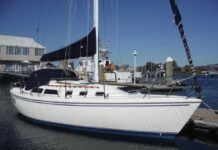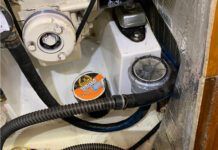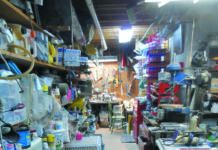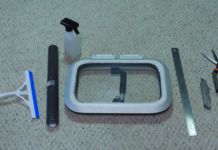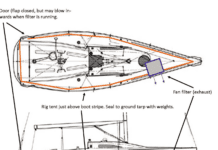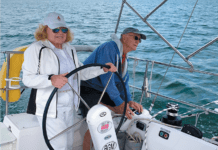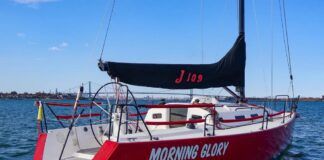How to Correct for Leeway Wind Drift
All vessels tend to sideslip, or make leeway, except with the wind dead ahead or astern. High-freeboard power vessels make leeway at slower speeds when the wind strikes their sides. Sailing vessels make lots of leeway when hard on the wind and less leeway when well off the wind. Light airs and heavy winds have more impact than moderate breezes.
Three Methods For Estimating Leeway
Choose any of these methods to make a rough estimate of your boats leeway angle.
1. Take a bearing on your wake trail. Use your handbearing compass to estimate leeway angle. Sight dead astern with your compass. Wait several minutes, then sight along the wake line to windward. The difference in the two angles gives you your leeway angle.
2. Take a bearing to an object astern. Find a landmark, light structure, or buoy dead astern. Take a bearing with the handbearing compass. Hold a steady course for several minutes, and then take a second bearing. The difference in bearings is your leeway angle.
3. Leeway by backstay wake angle. Steady up on a course for a few minutes until you see a wake trail to windward. Swing the boat quickly, lining up the backstay with the wake trail. Glance at the compass heading. The difference between the two headings is your leeway angle.
Steering Upwind To Correct For Leeway Angle
To correct for leeway, be sure to apply correction to your steering course in the proper direction. You want to steer the boat closer to the wind to counteract the effect of leeway. If the wind blows from the port side, subtract the angle from your course. If the wind blows from the starboard side, add the leeway angle to the course.
For example, you are close-reaching on the starboard tack, steering a course of 350 degrees magnetic. You sight astern with the handbearing compass for a reading of 170 degrees magnetic. Five minutes later, you sight down the wake line, and the bearing is 164 degrees magnetic. The difference gives you a leeway angle of 6 degrees. Youll need to point 6 degrees higher, so add the angle to your 350-degree course and steer a new course 356 degrees magnetic.
For 185 tips and techniques that you wont find in any textbook, but will work quickly and reliably every time, buy Seamanship Secrets, 185 Tips & Techniques for Better Navigation, Cruise Planning, and Boat Handling Under Power or Sail from Practical Sailor.



